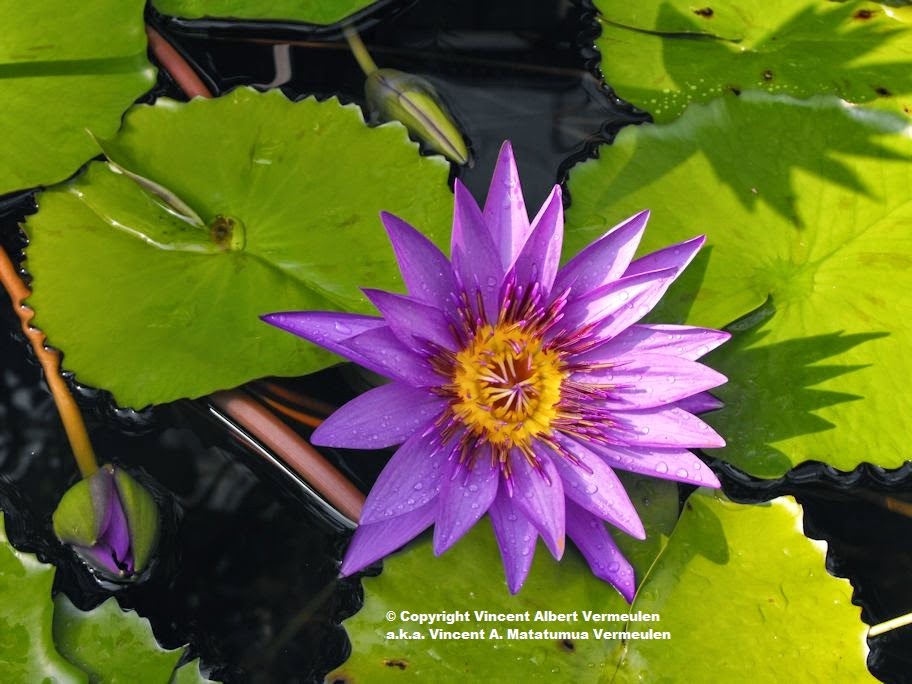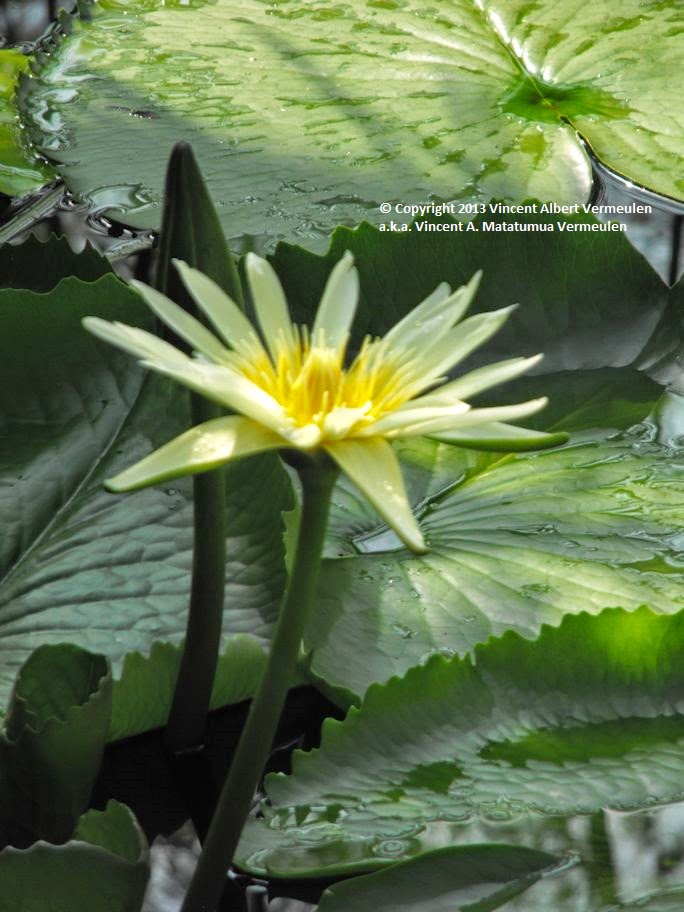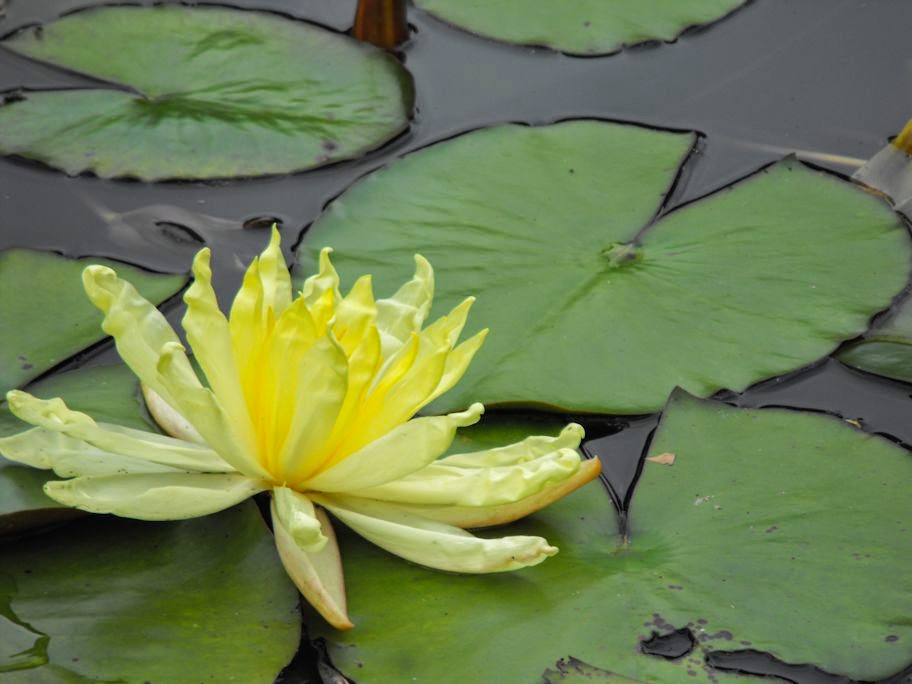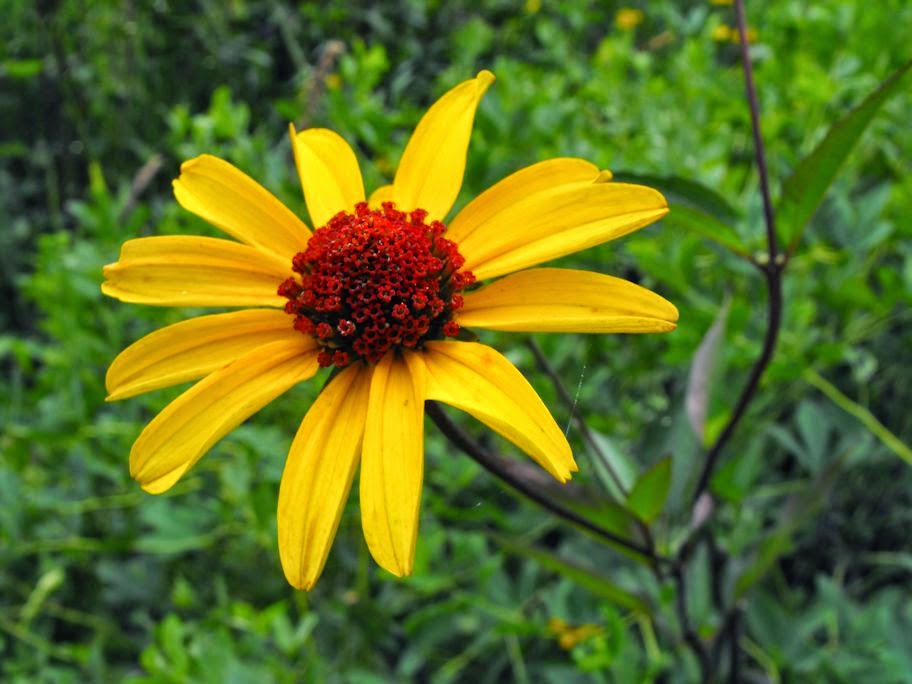 | ||
| Victoria cruziana and Nymphaea gigantea in the Victoria House of the Miese Botanical Garden Plant Palace |
 |
| Victoria cruziana and Nymphaea gigantea in the Victoria House of the Miese Botanical Garden Plant Palace |
Victoria cruziana was discovered in Bolivia by French Naturalist Alcide d'Orbigny during one of his expeditions in the region. The species is named after Andrés de Santa Cruz who had sponsored the expedition by Alcide's brother Charles Henry Dessalines d'Orbigny a botanist and geologist.
Santa Cruz was President of Peru and Boliva and was Supreme Protector of the Peru-Bolivian Confederation. It's more well known relative is Victoria amazonica which was originally called Victoria regina in honour of Queen Victoria although the name was changed to that of the Amazon where it is found in shallow waters of the Amazon Basin. The Genus Victoria is was also named in honour of Queen Victoria.
Nymphaea gigantea on the other hand is native to Australia and New Guinea.
 |
| Nymphaea gigantea in the Victoria House of the Miese Botanical Garden Plant Palace |
Scientific Name: Nymphaea gigantea
Common
names: Water lilies (English); Nénuphar d'ustralie (French); Australische waterlelie (Dutch) |
| Victoria cruziana in the Victoria House of the Miese Botanical Garden Plant Palace |
Scientific Name: Victoria cruziana
Common
names: Santa Cruz Water lily, Water platter, yrupe (English); Nénuphar géant (French); Reuzenwaterlelie (Dutch)
Taxonomic hierarchy:
Kingdom: Plantae - Plants
Subkingdom: Viridaeplantae – Green plants
Infrakingdom: Streptophyta – Land plants
Division: Tracheophyta – Vascular plants
Subdivision: Spermatophytina –
Spermatophytes (seed plants)
Infradivision: Angiospermae – Angiosperms
(flowering plants)
Class: Magnoliopsida –
Superorder: Nymphaeanae –
Order: Nypmhaeales –
Family: Nymphaceae – Water lilies (English)
Genus: Nymphaea –
Species: Nymphaea gigantea –
Genus: Victoria –
Species: Victoria cruziana –
Notes:
- I am using the taxonomical classification system used by ITIS (Intergrated Taxonomic Information System). I have decided to use this system in order to avoid confusion as well as because it offers a comprehensive hierarchy from kingdom right through to subspecies whereas other sources only go as far as order or provide the names of some of the higher taxonomical ranks but only indicate "unclassified" rather than providing the rank.
- When and where possible I will endeavour to include alternatives classifications although I may limit this to occasions where an opportunity arises to discuss the reason for the different classifications.
- Taxonomical data used in this post was retrieved [June 15 2014], from the Integrated Taxonomic Information System on-line database, http://www.itis.gov.
Books:
On-line sources:
- Royal Horticultural Society: Entry for Water lilies
- Official Website of the: Meise Botanical Gardens
- Integrated Taxonomic Information System on-line database: Entry for Nymphaea
- Wikipedia: Entry for Water Lilies
- Wikipedia: Entry for Nymphaeaceae
- Wikipedia: Entry for Victoria (plant)
- Wikipedia: Entry for Victoria amazonica
- Wikipedia: Entry for Victoria cruziana
- Wikipedia: Entry for Nympahaea gigantea
- Wikipedia: Entry for Alcide d'Orbigny
- Wikipedia: Entry for Andrés de Santa Cruz
- Wikipedia: Entry for Charles Henry Dessalines d'Orbigny
- Caryologia Vol 59 No. 1 25-30 (2006) PDF of article: Nuclear DNA C-values in 12 species of Nymphaeales
- Proceedings of the National Academy of Sciences U S A. May 25, 2004; 101(21): 8056–8060 Article by Gandolfo M.A., Nixon K.C. and Crepet W. L. : Cretaeous flowers of Nymphaeacea and implications for complex insect entrapment pollination mechanisms in early Angiosperms.
Flora and Fauna - Plants and Critters Blog by Vincent Albert Vermeulen is licensed under a Creative Commons Attribution-NonCommercial-ShareAlike 3.0 Unported License.
Based on a work at http://plantsandcritters.blogspot.be/.
Permissions beyond the scope of this license may be available at http://plantsandcritters.blogspot.be/.
My other blogs
· Flora
and Fauna - Plants and Critters (on plants, animals as well as
gardening, conservation and environmental matters):
http://plantsandcritters.blogspot.com/· The Blood of Souls (language, translation and etymology) : http://thebloodofsouls.blogspot.com/
· Whiskers on Kittens (Life with Kittens and Cats in general) : http://whiskersonkittens-vincent.blogspot.com/




















